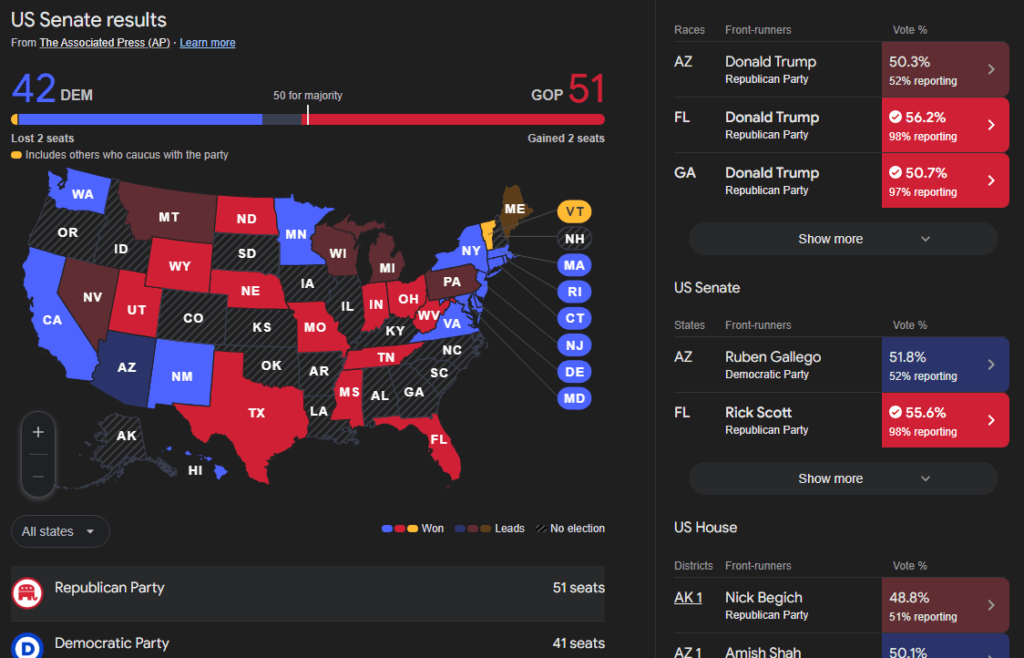
After two years of Democratic leadership, the Republican Party has taken back control of the US Senate.
A third of the upper house of Congress, or 34 seats, were up for grabs in Tuesday’s general election, with about nine of those seats being close.
With a slim majority, the Democrats were at risk of losing control of the chamber. Out of 100 available seats, the party’s 51-person majority was provided by a coalition of 47 Democrats and four independent senators.
To stay in power, the party had to defend every seat it could.
However, two significant losses on Tuesday firmly returned control of the Senate to Republicans.
In Ohio, a state in the Midwest, Democratic incumbent Sherrod Brown lost his reelection campaign. Republicans, meanwhile, took over a seat in West Virginia that had been occupied by retiring independent Senator Joe Manchin.
Additionally, the Republican Party was successful in defending Senator Ted Cruz’s vulnerable seat in Texas. Cruz defeated a Democratic candidate vying for his seat on Tuesday for the second time.
Deb Fischer, a Republican incumbent in Nebraska, successfully repelled an independent opponent named Dan Osborn, who kept the campaign close in the closing weeks.
Republicans might gain control of both chambers of Congress as a result of the Senate’s shift in power, giving them authority over the legislative agenda for at least the next two years.


